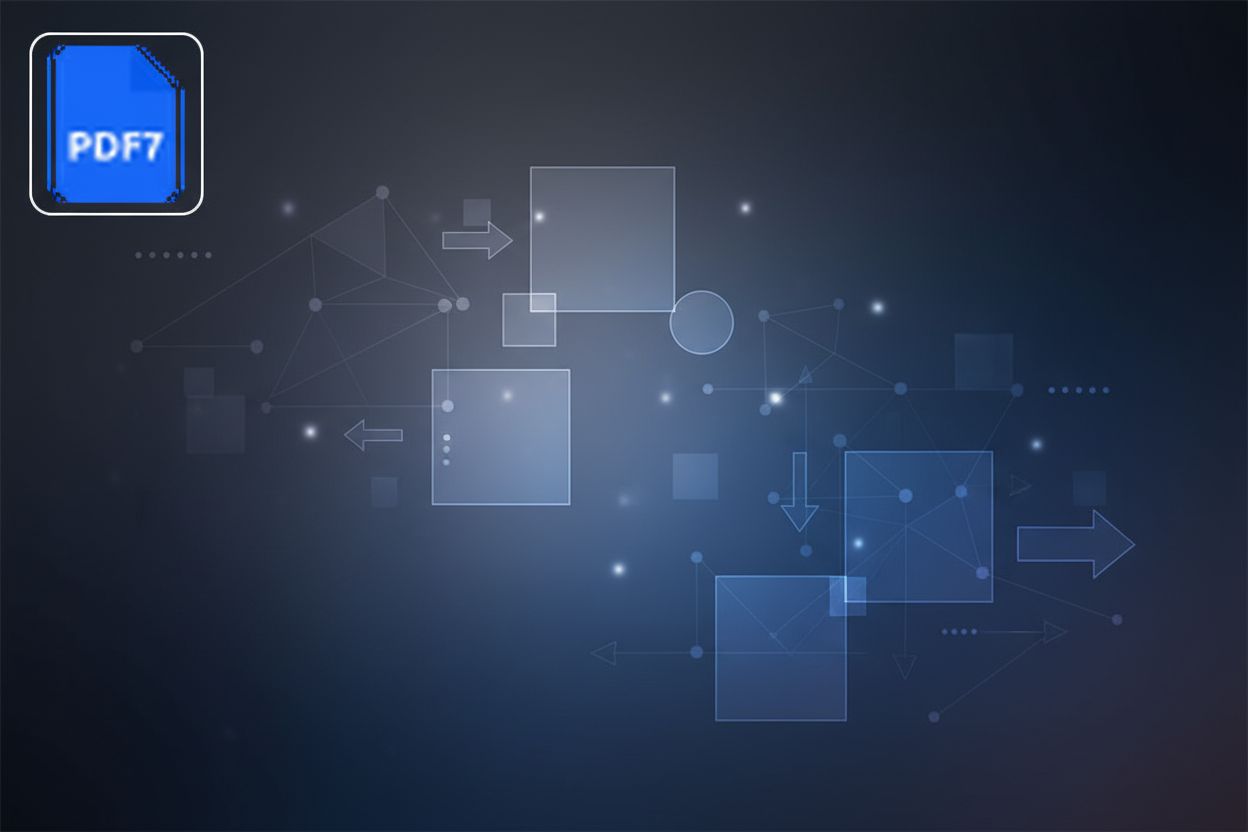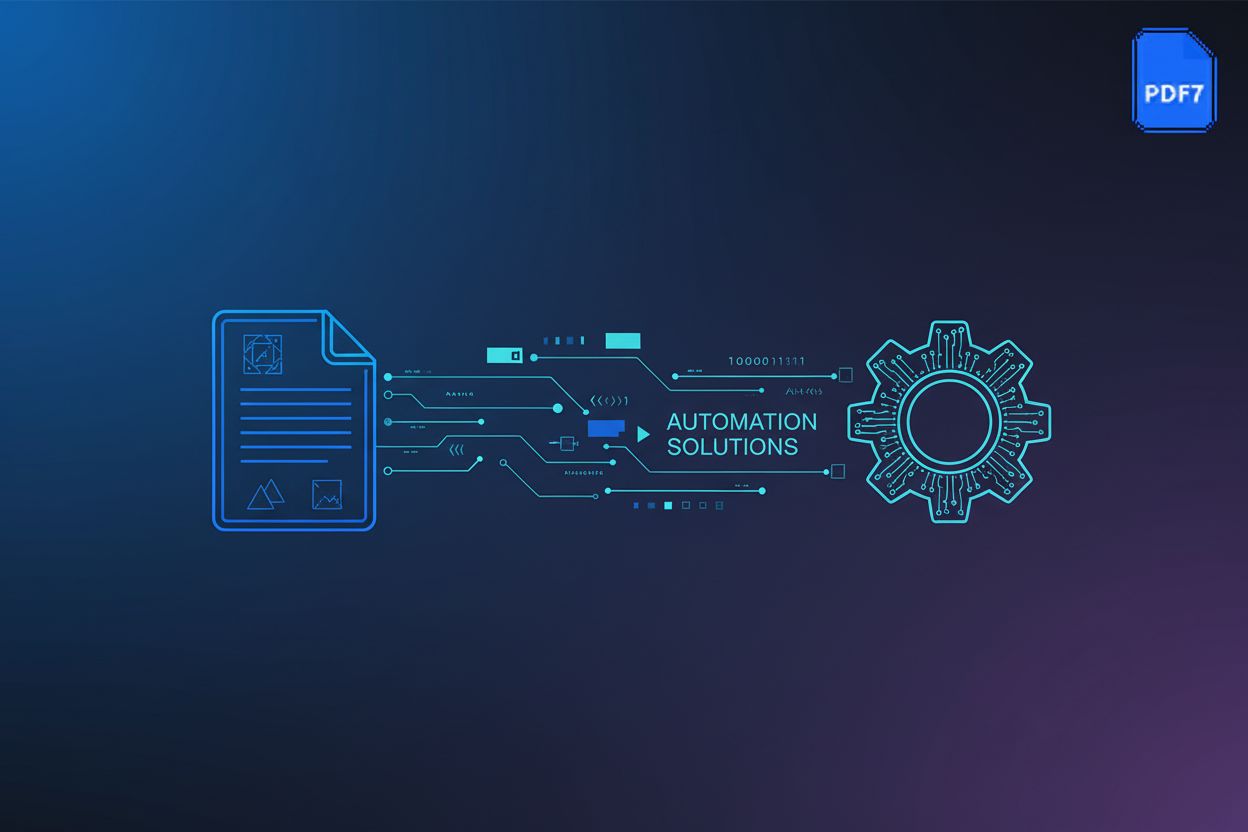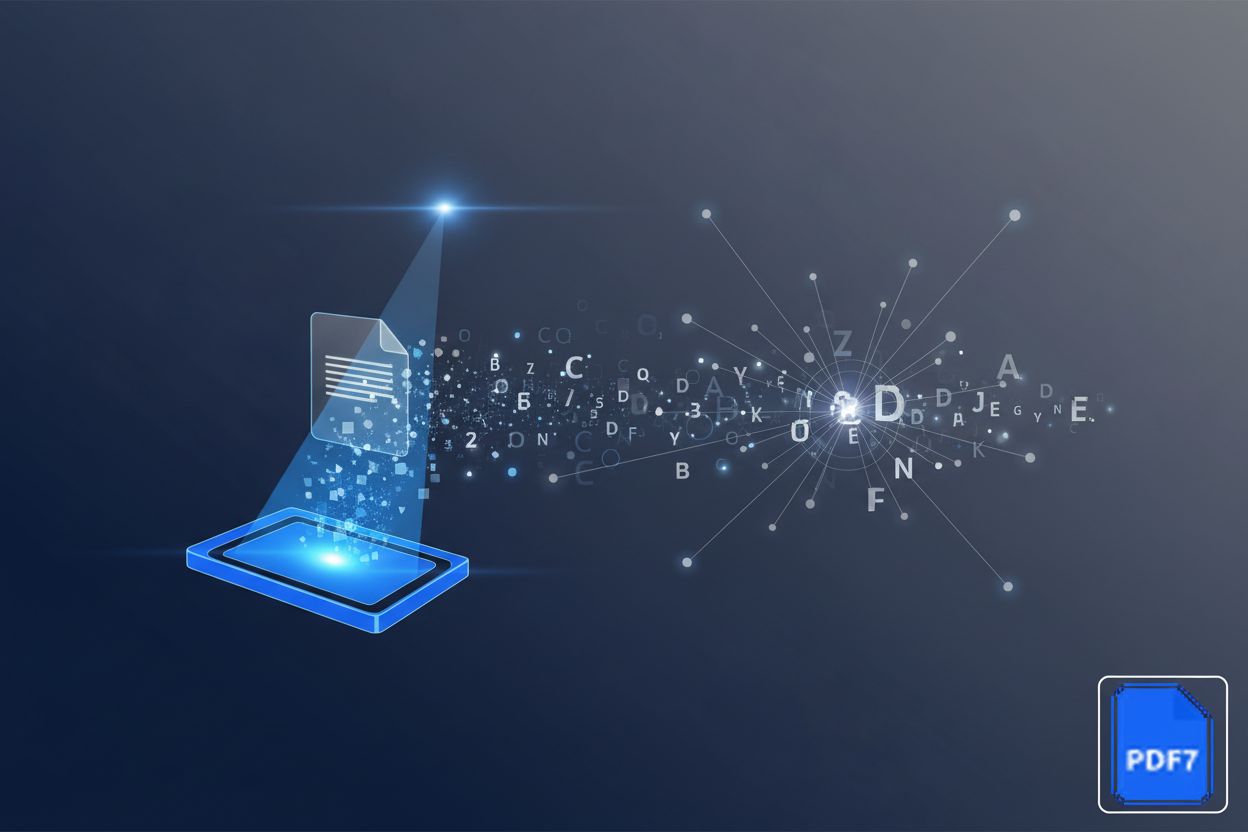Automate Data Extraction from PDFs with Advanced Tools
TL;DR
Introduction to Automated PDF Data Extraction
Automated PDF data extraction, who'd have thought it'd become so crucial, right? I mean, we're drowning in PDFs!
- We're seeing a huge upswing in companies using PDFs for everything from invoices to reports. It's like, can't escape 'em!
- Trying to pull data out manually? Forget about it. Talk about a time sink, and errors? Guaranteed.
- But hey, automation swoops in! Think faster, more accurate, and you can actually handle all those PDFs.
Imagine a hospital extracting patient info or a retailer pulling sales data without wanting to scream. It's real, people.
So, what's next? We'll first understand the challenges involved, and then dive into the tools that make this magic happen.
Understanding PDF Structure and Data Extraction Challenges
Ever tried wrestling a PDF into submission? It's not always pretty. The structure can be a real headache, and that's before you even try to extract anything.
- First off, you got native PDFs vs. scanned PDFs. Native ones? Usually a breeze. Scanned? Basically, a picture. Think trying to pull text from a photo of a document – ocr tech helps, but it's never perfect. For native PDFs, standard parsing libraries work great. For scanned PDFs, you'll definitely need OCR.
- Then there's the whole image-based vs. text-based thing. Text-based are searchable and selectable; image-based are, well, images. It's obvious which one is easier to deal with, right? A retailer trying to pull product descriptions from image-based PDFs is gonna have a bad time. Text-based PDFs can be handled by libraries like PyPDF2 or PDFMiner, while image-based ones absolutely require OCR.
- And don't forget the complexity factor. Simple PDFs? Cool. Complex ones with tables, weird layouts, and multiple fonts? Suddenly, it's a data extraction nightmare. Imagine a hospital dealing with patient records in wildly different formats – chaos!
So, yeah, understanding the PDF's bones is kinda crucial, or you'll be fighting a losing battle. Next up, let's talk about the specific challenges that make pdf data extraction such a pain.
Advanced Tools and Technologies for PDF Data Extraction
Okay, so you're probably thinking, "parsing libraries and apis? Sounds kinda boring," but trust me, this stuff is the backbone of serious PDF data extraction. It's where you get down and dirty with the code.
- PDF parsing libraries are basically toolkits that let you peek inside a PDF's structure. Think of libraries like PDFMiner and PyPDF2 (for Python) as giving you x-ray vision for PDFs. Instead of relying on point-and-click tools, you can write scripts to grab exactly what you need. For instance, a financial firm might use these libraries to automatically extract figures from hundreds of quarterly reports, formatting them for analysis.
- APIs take it up a notch. They're like having a remote control for PDF extraction. You send a request, and the api sends back the data. No need to wrestle with the PDF's internals yourself. Popular examples include cloud-based services like Google Cloud Vision AI (for OCR and document understanding), Amazon Textract, and specialized PDF APIs like those from Adobe or Docparser. These often work via REST APIs, where you send a PDF file or URL and receive structured data (like JSON) in return. Some also offer SDKs for easier integration. Imagine a healthcare provider using an api to pull patient data from standardized forms directly into their system – less manual entry, fewer errors.
- Customizing extraction logic is where the real magic happens. You're not stuck with a one-size-fits-all solution. You can tailor your code to handle even the weirdest PDF layouts.
Here's a more advanced example using Python and PyPDF2 to extract specific data using regular expressions:
import PyPDF2
import re
def extract_invoice_data(pdf_path):
invoice_number = None
total_amount = None
with open(pdf_path, 'rb') as file:
reader = PyPDF2.PdfReader(file)
for page_num in range(len(reader.pages)):
page = reader.pages[page_num]
text = page.extract_text()
# Example: Extracting Invoice Number (assuming format INV-XXXXX)
inv_match = re.search(r'Invoice Number:\s*(\w+-\d+)', text)
if inv_match:
invoice_number = inv_match.group(1)
# Example: Extracting Total Amount (assuming format $XX.XX or XX.XX)
amount_match = re.search(r'Total Amount:\s*\$?([\d,]+\.\d{2})', text)
if amount_match:
total_amount = float(amount_match.group(1).replace(',', ''))
return {"invoice_number": invoice_number, "total_amount": total_amount}
Assuming 'example_invoice.pdf' exists and has the relevant data
extracted_data = extract_invoice_data('example_invoice.pdf')
print(extracted_data)
This example shows how you can use regular expressions to find and extract specific pieces of information, like an invoice number or a total amount, which is a common requirement beyond just getting raw text.
So, next up, let's talk about document workflow automation and how it all ties together.
Step-by-Step Guide to Automating Data Extraction
Okay, so you've got the tools, but how do you actually use them to make the magic happen? It's not just plug-and-play, sadly.
First thing's first: document quality. If your PDF looks like it's been through a shredder, ain't no tool gonna save you.
- Preprocessing is key. Think of it like prepping a canvas before you paint. Deskewing (straightening out tilted pages), noise removal (cleaning up speckles), and image enhancement (sharpening blurry bits) can make a HUGE difference. Imagine a law firm dealing with scanned documents from the 80s – cleaning those up is step one.
- Password-protected PDFs? Yeah, that's a thing. You'll need to unlock them before you can extract anything. Most tools have a way to handle this, but make sure you have the right permissions, obviously! Can't just go cracking into sensitive documents, that's a no-no.
Now, let's get those tools humming.
- OCR software needs love, too. It's not just install-and-go. You gotta tweak those settings for optimal performance. For instance, you'll want to select the correct language pack for the document's text to ensure accurate character recognition. Adjusting character recognition modes (e.g., for digits, specific symbols, or general text) can also boost accuracy. Image preprocessing options, like binarization (converting to black and white) or despeckling, are crucial for cleaning up scanned images before OCR. A retail company extracting data from product catalogs will have different OCR needs than a hospital processing medical records.
- Extraction rules and templates are your friends. Defining these tells the tool exactly what data you're after and where to find it. It's like giving it a treasure map! For instance, you might set a rule to always grab the invoice number from the top right corner. These rules can be created in several ways:
- Coordinate-based: You define specific X, Y coordinates on the page where the data is located. This is simple but brittle if the layout shifts.
- Regular Expressions (Regex): You define patterns to match the data you're looking for (like the invoice number example above). This is powerful for structured data.
- Visual Templates: Some tools allow you to "draw" boxes around the data you want to extract on a sample document, and the tool learns to find similar areas on other documents.
- Rule-based logic: Combining conditions, like "if the word 'Total' appears, then grab the number to its right."
Many tools offer a GUI for creating these templates, while others require coding them using libraries.
- Test, test, test! Run extractions on sample PDFs and see what comes out. Refine your rules and templates based on the results. It's an iterative process, so don't expect perfection on the first try.
So, you got data...but is it good data?
- Implement data validation checks. Make sure dates are in the right format, numbers are actually numbers, and so on. Garbage in, garbage out, right?
- Handle errors and inconsistencies gracefully. What happens when the tool can't find something? Set up rules to flag these instances for manual review.
- Clean and format that data for analysis. Get it ready for whatever you're gonna do with it – spreadsheets, databases, ai models, whatever.
And that's the gist of it! Next up, we'll look at validating and cleaning the extracted data to ensure everything is accurate, along with other key practices.
Best Practices for Efficient and Accurate Data Extraction
Data extraction ain't just about having the fanciest tool; it's about using it right. Think of it like a chef – a great knife is useless if you don't know how to wield it, eh?
- Choosing the right tool is crucial. A small business drowning in a few invoices each month will have different needs then massive hospitals processing thousands of patient files daily.
- Don't forget about cost, scalability, and ease of use. You don't wanna spend a fortune or need a phd to run the thing.
- Cost: Consider pricing models. Are you paying per document, per page, or a monthly subscription? Look out for hidden fees for extra features or support. Open-source tools might be free but require more in-house expertise.
- Scalability: Can the tool handle your current volume, and more importantly, can it grow with you? Check for performance under heavy load and if it supports distributed processing.
- Ease of Use: How steep is the learning curve? Is there good documentation and community support? A user-friendly interface can save a lot of time and frustration.
- Finding the right balance between automation and manual review is key. AI can do a lot, but sometimes, a human eye is still needed to catch those weird edge cases. To determine this balance, consider:
- Data Complexity: Highly structured, predictable data can be heavily automated. Messy, varied formats might need more human oversight.
- Accuracy Requirements: Critical data (like financial or medical records) demands higher accuracy, often necessitating more manual checks than less sensitive information.
- Volume of Documents: For very high volumes, even a small percentage of manual review can be overwhelming. Aim to automate as much as possible while ensuring critical errors are caught.
- Cost-Effectiveness: Calculate the cost of automation (software, development) versus the cost of manual labor. Find the sweet spot where automation provides the best ROI.
Think of a retail giant using ai to scan product descriptions. If the ai misreads even a small detail, it can lead to major issues. So, next, let's dig into how to optimize your workflow for maximum efficiency.
Conclusion
So, you've automated your PDF data extraction – congrats! But what's next, you might be wondering? Well, the future's looking pretty bright, actually.
- We're seeing ai get smarter and smarter, especially when it comes to understanding documents. Imagine ai that can not only extract data but also understand the context, even from messy, unstructured PDFs. Think about a legal firm using ai to analyze contracts, not just pulling out dates and names, but actually understanding the clauses and potential risks.
- Document processing automation is becoming a key part of digital transformation, too. It's not just about saving time; it's about making smarter, data-driven decisions. A recent report even suggested that intelligent document processing could boost productivity by up to 40% in some industries.
- And document accessibility tools are getting way better, ensuring everyone can access and understand information, regardless of their abilities.
Automating PDF data extraction is not just a "nice-to-have" anymore, it's becoming essential. As ai and automation continue to evolve, the possibilities are pretty much endless. Whether your a healthcare provider, retailer, or financial institution, embracing these tools can unlock a whole new level of efficiency and insight. Just remember to choose the right tool, keep an eye on data quality, and stay curious about what's next!







